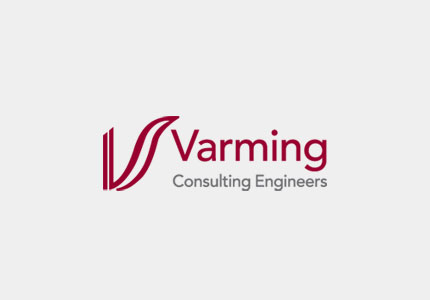Engineering BIM with Varming Consulting Engineers
Attracting new business and building client relationships motivated Varming Consulting Engineers to adopt BIM.
Established in 1946 with offices in Dublin, Cork and Roscommon, the firm’s proactive and innovative approach to their business has led to significant investment in staff training, software and hardware. “We have been proactive in terms of our commitment to the BIM implementation process within our organisation and we continually build on this as a company and have faced the challenges and opportunities that BIM presents head-on” says James Kavanagh, Chief Executive at the firm, “60% of our Engineering Staff are formally trained in Revit MEP and this training together with significant capital investment is being put into practice on a range of current projects.
Continuous Professional Development in the form of internal workshops, regular attendance and at industry seminars and formal structured training is the key to the company’s operations and as part of this overall approach BIM designs are presented to directors before all board meetings. “This facilitates two way feedback, knowledge sharing and provides encouragement. As with most things in Business I think one of the key issues to success in the implementation of the BIM process into the Business is recognising the importance of encouraging, supporting and empowering people and then acting on this”

Declan Alcock is Project Director at Varming Consulting Engineers and heads up the sustainability and BIM teams. “I think the difficulty that some firms have with BIM is that it’s not just a way of designing buildings, it’s a whole new business process. There are protocols and procedures that must be put in place so there’s a steep learning curve initially.” Declan is well versed in the technology; he has been involved in sustainability for the past 15 years using 3D modelling. When Varming started to integrate BIM, Declan was the obvious choice to lead the change over. He also lectures in “Sustainable BIM Design and Construction” as part of the CITA MSc in Construction Informatics and was the keynote speaker at the event on “Project Analysis” in April 2013. “Over the past 10 years we have been using 3D energy/environmental modelling software on the majority of our projects for sustainable design and have developed expertise in Passive House Design, BREEAM etc.. Implementing BIM was a natural progression for the company” Declan says BIM also helps engage clients more closely with the design process as they can visualise the final product along with the benefits of cost management and asset management.
“We have been actively promoting these benefits to clients. A significant proportion of our new projects are using BIM.”
Declan believes the construction industry in Ireland is going through a transformation after the past few years. “The focus has shifted to producing better quality sustainable buildings. This presents challenges in terms of the provision of Sustainable Design Solutions and procurement; there is also a move away from the traditional interaction of design disciplines towards integrated project delivery.” BIM supports these processes by allowing buildings to be designed more efficiently with less waste in terms of time, materials and resources. Ultimately, the client ends up with a better quality product.

James believes BIM will eventually be mandated in Ireland but that we shouldn’t be waiting for this to happen. “We don’t need a Government directive to jumpstart the industry, that’s already happening. From our own point of view, using BIM reflects positively on us as a company and also on staff, from both an external and internal perspective. I feel that we’re a step ahead of our competitors and we actually find ourselves informing and engaging clients in relation to the benefits of BIM. We began implementing BIM to gain new clients and maintain existing client relationships while maintaining a high standard and quality of design and that’s exactly what we’re doing.”

